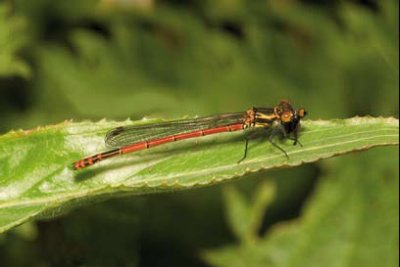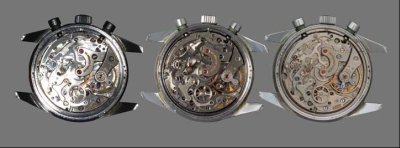articles/Lens/gettingclose-page1
Getting close with SIGMA - part 1 of 1 2 3 4 5
by Mike McNamee Published

A Large Red damselfly has a tasty snack for its lunch. The longer focal length of the Sigma 150mm keeps your working distance high for timid species. The sharpness of this image at A3 is quite amazing, certainly the best that the author has seen in several decades of dragonfly photography.
Mike McNamee takes a look at the close-up options from Sigma specifically, the new 150mm Macro lens, the EM-140DG Macro Flash and the standard EF-500 DG Super Flash gun
Of all the equipment that must work in close harmony, macro gear offers some of the greatest challenges, especially in natural history field work. Here we select a trio of components from Sigma and put them through some rigorous testing.

A composite shot of three illumination methods. On the left the EM-140. Centre the EM-140 held against the side of a DeVere 90cm light dome. On the right ambient room light used for a time exposure using the DeVere produces the most pleasing result.
Sigma 150mm f2.8 APO Macro DG
The long name of this lens is matched only by its sturdiness. Photographers who specialise in natural history either for money or enjoyment are going to love this one! You can fit your average dragonfly nicely in the frame from about eight feet away and say a small copper (butterfly, not policeman!) from 1½ to 2 feet away.
The lens has a maximum aperture of 2.8. It is APO design using 16 elements in 12 groups including a focussing pair of Special Low Dispersion glass elements. The closest focussing is 0.38, which gives a magnification of 1:1 (life size) on the "film" plane. The test lens could be used on film and digital although there is a 4/3 design also. The front element is 72mm and the lens is equipped with a well-fitting, but removable, lens hood.
You are currently on page 1
- Getting close with SIGMA page 1
- Getting close with SIGMA page 2
- Getting close with SIGMA page 3
- Getting close with SIGMA page 4
- Getting close with SIGMA page 5
1st Published
last update 09/12/2022 14:54:40
More Lens Articles
There are 29 days to get ready for The Society of Photographers Convention and Trade Show at The Novotel London West, Hammersmith ...
which starts on Wednesday 14th January 2026




